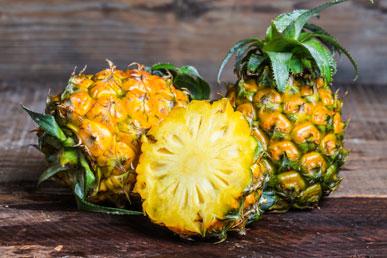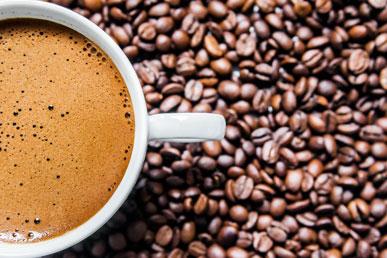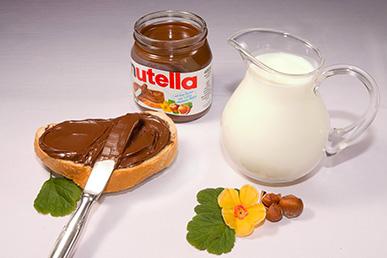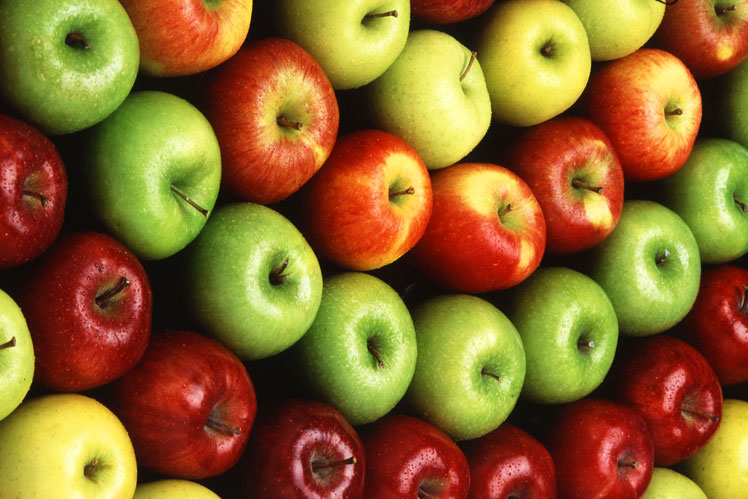
There are more than 7500 varieties of apples in the world. The domestic apple tree is the most widespread, the plum-leaved apple tree is less commonly grown. The apple tree comes from Central Asia, where the wild-growing ancestor of the domestic apple tree, the Sievers apple tree, still grows. To date, there are many varieties of this type of apple tree, growing in various climatic conditions. By ripening time, summer, autumn and winter varieties are distinguished, later varieties are distinguished by good resistance.
Different varieties of apples are designed for growing in different types of temperate and subtropical climates. Varieties with soft but crunchy fruits have gained commercial distribution. Other desirable qualities of modern commercially bred varieties are beautiful color and shape, resistance to browning, transportation, long-term storage, and good taste. Plants should have high yields and disease resistance.
Most cultivated varieties are for fresh consumption, but there are varieties grown for culinary use and for making cider. Cider apples usually have a tart, astringent taste and are of little use fresh, but the drink made from them has a more refined taste than that made from dessert apples.
World production of apples is about 100 million tons. About 50% of all apples are grown in China. The United States and Europe are also major producers of apples.

Apple production in the world. Average yield per hectare | wikimedia.org

food photo created by jcomp – www.freepik.com
How apples are stored
Apply several modes of storage of apples:
- at low temperatures under normal atmospheric conditions
- in a refrigerator with a controlled gas environment (RGS)
- in a modified atmosphere refrigerator (MAC)
On an industrial scale, apples can be stored for several months in chambers with a controlled atmosphere, usually at a temperature of +3... +4 °C, depending on the variety. Apples are usually stored in chambers with high concentrations of carbon dioxide and minimal oxygen. This environment prevents the apples from ripening too quickly. However, this mode of storage requires significant material and energy costs, so it is used only for fruits of the highest and first commercial grades.
For home storage, most varieties of apples can be kept for about two weeks if kept in the coolest part of the refrigerator (i.e. below +5°C). Although some varieties of apples have a shelf life much longer than others.
During storage and transportation, apples can be coated with diphenyl, which belongs to food additives and is used as a preservative, but it is banned in the EU and the USA as a carcinogen.
Interesting fact
It is widely believed that the reason for the darkening of the cut of an apple in air is the oxidation of iron compounds contained in the apple. In fact, the darkening is caused by the formation of flobaphenes from polyphenols with the participation of tyrosinase. Polyphenols undergo similar changes in potatoes.
It is also interesting that there is a variety of genetically modified Arctic apples that do not darken on the cut. Apples of this variety have been approved for sale in the US and Canada since 2015.

Food photo created by lifeforstock – www.freepik.com
History of apple cultivation
The ancestors of modern man have always eaten wild apples. Apples have been cultivated for almost 5000 years. The homeland of the domesticated apple tree is the territory of modern southern Kazakhstan and Kyrgyzstan, where the Sievers apple tree is still found in the wild, from which the domestic apple tree originated. Presumably, from there, during the time of Alexander the Great or during other migrations, she came to Europe. According to another version, this fruit tree originally grew in the area between the Caspian and Black Seas, and from there it was brought to other parts of the world.
Ancient Greece was the cradle of apple growing in Europe. The Ancient writers described 36 varieties of apple trees grown in their time. In European culture, the apple tree quickly took an important place. The motif of “golden apples” can be considered pan-European, supposedly granting immortality and eternal youth and therefore often stolen. Even the word "paradise" in Celtic sounds like Avalon ("country of apples").
In Russian lands, a cultivated apple tree first appeared in the 11th century in the monastery gardens of Kievan Rus. So, under Yaroslav the Wise (in 1051), an apple orchard was laid, later known as the garden of the Kiev-Pechersk Lavra. In the 16th century, the apple tree appeared in the northern regions of Rus'. Four types of apple trees were used to develop cultivars of the apple tree: low apple tree, forest apple tree, berry apple tree, plum-leaved or Chinese apple tree.
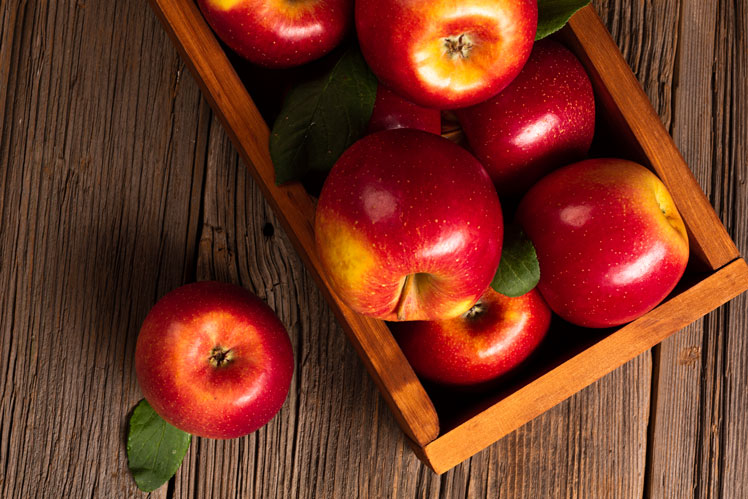
food photo created by freepik – www.freepik.com
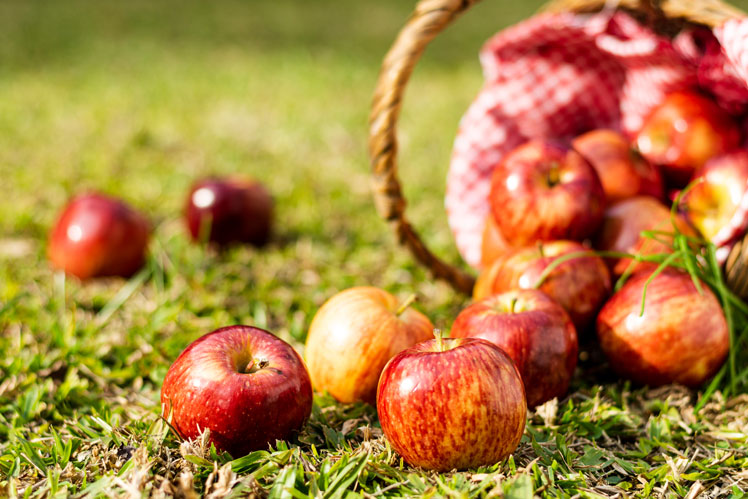
food photo created by freepik – www.freepik.com
Than useful apples
There is a proverb in English: “He who eats an apple a day does not visit the doctor” (“An apple a day keeps the doctor away”). According to some studies, eating apples can reduce the risk of colon, prostate, and lung cancer. Compared to other fruits and vegetables, apples do not contain as much vitamin C, but they are rich in other antioxidants.
The average apple weighs about 242 grams and contains about 126 calories. Apples contain malic, tartaric, citric and other organic acids, sugars (glucose, sucrose and others), vitamins C, A, B1, carotene, tannins and pectin, trace elements (iron, copper), macronutrients (potassium, calcium, magnesium and others), essential oil, and other substances.
The fiber in an apple, although less than in most other fruits, stimulates intestinal motility, which may reduce the risk of cancer. Fiber can also be helpful in preventing heart disease, losing weight, and lowering cholesterol levels.
Dried apples are a good source of easily digestible sugars (contain from 8 to 15%), microelements (up to 0,5% of various mineral salts), and the seeds of one medium-sized fruit contain about the daily norm of iodine.
Apple seeds contain the poisonous glycoside amygdalin. Eating small amounts of apple seeds does not cause any side effects, but eating extremely large doses can cause adverse reactions.
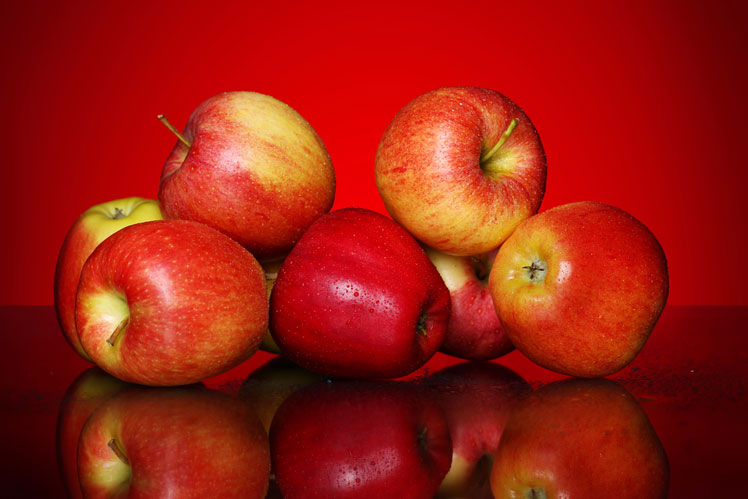
Food photo created by Racool_studio – www.freepik.com

food photo created by jcomp – www.freepik.com
Apple day
Apple day
In the UK, there is an unofficial holiday called Apple Day. It has been held every year on October 21 (or the closest public holiday to that date) since 1990. Although the holiday is called "Apple Day", it is dedicated not only to apples, but also to all orchards, as well as local island attractions.
This holiday carries some elements of a fair with a thematic apple bias, where you can not only taste hundreds of varieties of apples (some of which are not sold in stores at all), but also buy seedlings in order to grow them in your own garden or near Houses. Novice “apple growers” can expect to receive qualified advice on “apple” issues of interest to them during the “Apple Day”.
At the festival, you can also try dozens of a wide variety of culinary dishes from apples and get recipes for some of them so that you can later cook them at home.
All sorts of "apple contests" have already become a traditional attribute of this holiday, such as archery at apples or peeling an apple, where the winner is the one who managed to cut the longest peel from an apple.

Background photo created by valeria_aksakova – www.freepik.com
Apple Day USA
There is also an Apple Day in the United States of America. This is an unofficial holiday called "Apple Day of USA", which is celebrated annually on February 20th. Apple Day in the United States is not a non-working day unless it falls on a weekend.
On this day, most culinary colleges hold fun festive shows and master classes dedicated to cooking dishes where the main ingredient is an apple.
All sorts of “apple contests” have already become a traditional attribute of this holiday, such as archery at apples or peeling an apple, where the winner is the one who managed to cut the longest peel from an apple.
Interesting fact
The current record for cutting the longest peel from an apple – 52 meters 51 centimeters – was set by Kathy Walfer in New York in 1976. It took her nearly 12 hours to peel the apple.
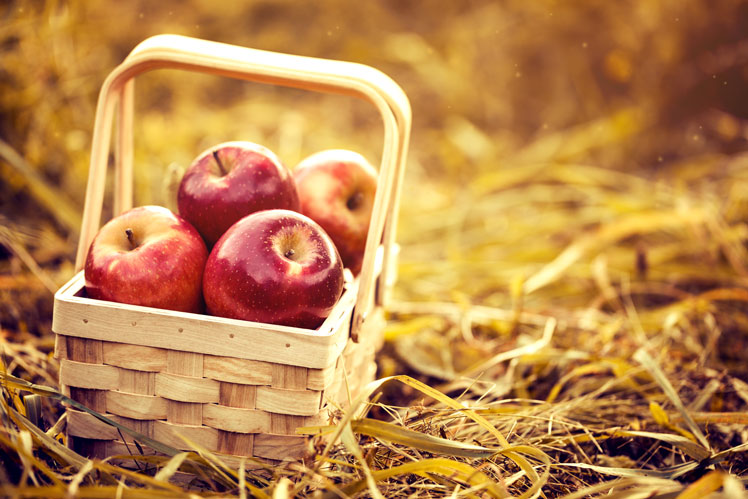
Background photo created by valeria_aksakova – www.freepik.com
Apple Spas
In the folk calendar of the Slavs there is a holiday Apple Savior, which falls on August 19th. It was one of the first harvest festivals – the day from which, according to legend, nature unfolded from summer to autumn and winter.
According to popular beliefs, Apple Savior means the onset of autumn and the transformation of nature. The Eastern Slavs only from the Apple Savior were allowed to eat apples and dishes from the fruits of the new harvest. On this day they are consecrated in the church. On the day of the Apple Savior, they baked apples, baked pies, pancakes with apples, mushrooms and berries.

Food photo created by timolina – www.freepik.com
We also recommend:



